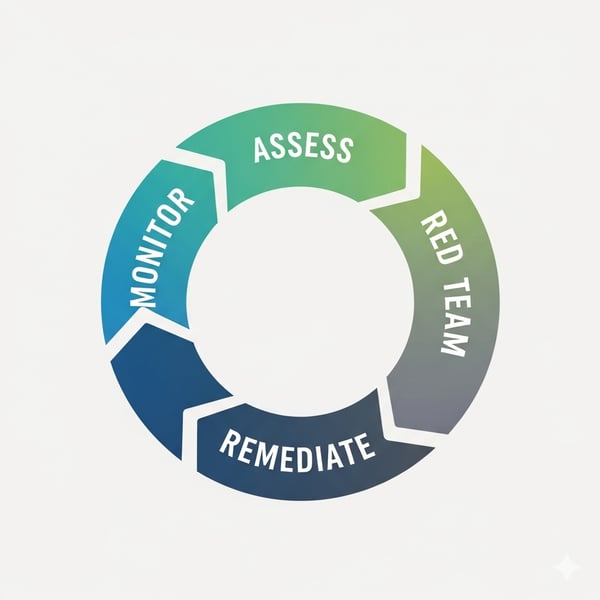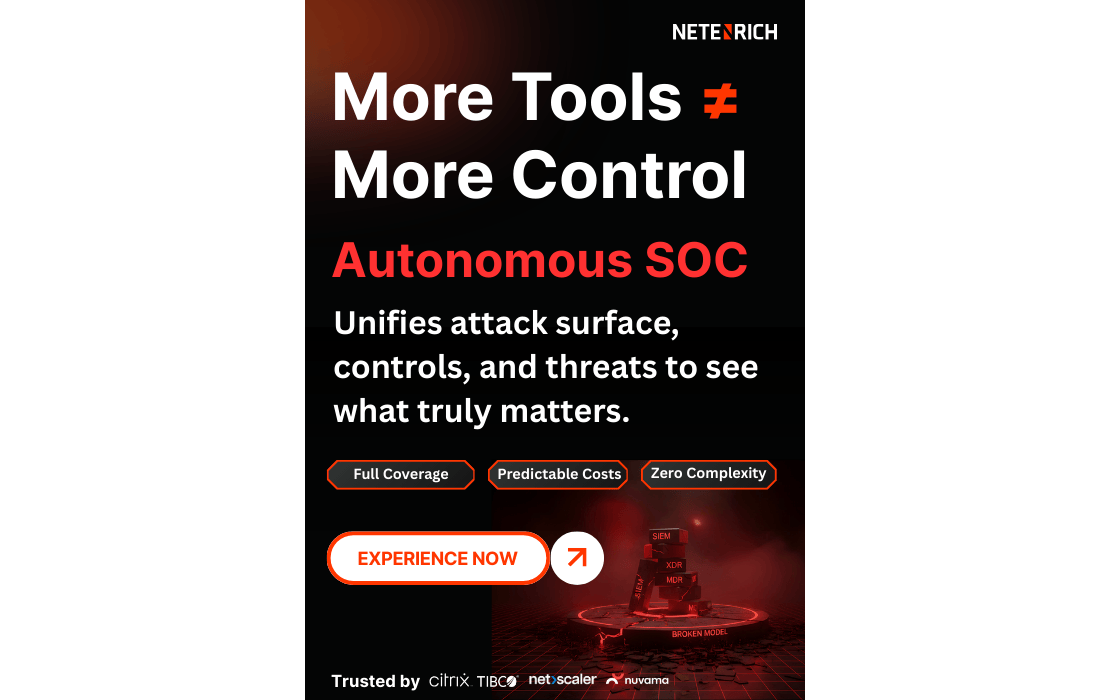Key Takeaways
- AI introduces hidden risks such as data poisoning, model theft, prompt injection, and rogue AI agents.
- Traditional controls miss these threats, requiring continuous monitoring, red teaming, and risk assessments.
- Strong governance, access controls, and validated data pipelines reduce exposure across AI supply chains.
- Guardrails for autonomous AI agents are critical to prevent financial fraud, data leaks, and process abuse.
- CISOs can link AI threat mitigation directly to resilience, trust, and board-level confidence.
Artificial intelligence (AI) is no longer optional. It has become a necessity in almost every corporate environment. From product development and customer engagement to supply chain optimization and cybersecurity operations, AI systems are now interlaced with every aspect of corporate IT.
According to Gartner1, by 2026, more than 80% of enterprises will use GenAI-enabled applications in production environments, up from less than 5% in 2023.
The upsides of AI can't be denied. Faster decisions, lower operational costs, and enhanced customer experiences make AI an absolute necessity. However, every new layer of automation introduces a new attack surface, creating more security risks.
The Drift AI chatbot breach2 is a stark example. Hackers compromised OAuth tokens tied to the chatbot, leading to the exposure of sensitive Salesforce data. While it was not a direct failure of the AI logic, the integration of AI systems without holistic risk analysis created an entry point.
This is the hidden danger. AI amplifies both benefits and risks, making it extremely necessary for CISOs and boards to get a clear view of emerging vulnerabilities, particularly those that traditional controls miss.
Why does AI create new security risks?
AI differs from conventional software in that it is extremely unpredictable. This is because instead of using deterministic code with predictable outputs, AI models learn from data, adapt over time, and can even act autonomously in “agentic” configurations. Without aligning assets, like models and data pipelines, with possible threats, AI risks multiple invisibly.
Here are three main reasons AI environments increase risk:
- Dynamic behavior: AI Models evolve as they accumulate new data, making outputs less predictable and harder to determine.
- Complex supply chains: AI systems rely on open-source libraries, pre-trained models, APIs, and plugins, all of which are potential vulnerable points for attackers.
- Autonomous decision-making: With the rise of agentic AI, systems can execute actions without human oversight, making them more vulnerable to threats.
As one CISO noted in a recent roundtable: “The challenge is ensuring data quality; if the data pipeline is noisy, it affects the AI outputs.”
One of the CISO's attending our round table last September expressed AI's ’dynamic, self-evolving nature best, “Each situation is like a machine that’s always alive—it keeps brewing beneath the surface.”
What Are the Most Common AI Security Risks?
AI introduces new, more sophisticated attack vectors for hackers to exploit in their attempts to compromise corporate systems. As the technology gets integrated into more aspects of the business, SOC teams must recognize the risks associated with it and its real-world implications.
Common AI security risks include:
- Data Poisoning: In this, attackers manipulate training data so that the AI model learns flawed behavior. For example:
- A poisoned fraud-detection model may ignore fraudulent transactions if attackers planted biased data.
- Poisoned recommendation engines could boost malicious products or misinformation.
- Model Theft: Attackers steal AI models to replicate their functionality or identify weaknesses, creating not just security issues but also an IP and competitive risk.
- Prompt Injection: In generative AI systems, attackers embed malicious instructions within prompts. Example: A customer-facing chatbot is manipulated into leaking confidential data or executing harmful queries, resulting in a data breach.
- Adversarial Attacks: Small perturbations in input data can cause AI models to misclassify. For example, slightly altered stop-sign images can fool self-driving car systems into treating them as yield signs.
- Supply Chain Vulnerabilities: AI systems rely on third-party components like open-source libraries. If a library is compromised, AI code-generation tools may automatically ingest malicious code, causing major security risks.
- Agentic AI Risks: Agentic AI poses the newest and most dangerous of all. Since autonomous AI agents can take independent actions, including executing financial transactions, a compromised finance agent could initiate a fraudulent wire transfer before it can be detected. AI SOCs present some risk here as well, but they are more commonly used to mitigate the risk of AI issues.
- Dark LLMs: On the dark web, attackers use “dark LLMs” trained specifically to generate malware, phishing kits, or ransomware payloads at scale to attack AI systems.
Unlike conventional software, AI risks are not static. Attackers innovate as fast as defenders deploy countermeasures, hence identifying AI-related threats is essential.
How can teams identify AI-related threats?
AI-related threats don't follow the rules of file-based attacks, so minimal evidence is left that can quickly identify when something is a threat. Hence, detecting AI risks requires behavioral approaches rather than signature-based detection.
1. Continuous Behavioral Monitoring
Monitoring deviations in AI behaviour, such as unusual output patterns, unexpected data requests, or anomalous latency, can be an early warning of AI-related threats.
For example, if an NLP model suddenly starts generating responses in an unusual language, it can be a sign of a potential compromise.
2.AI Red Teaming
This involves simulating adversarial attacks before deployment. Security teams can deliberately test for prompt injection attempts, adversarial noise tolerance, and data poisoning resilience to uncover hidden weaknesses that standard QA processes may miss.
3. Risk Assessment
Risk assessments are also key for identifying and mitigating AI security risks. These assessments should be performed both before deployment and at regular intervals afterward to detect newly introduced or emerging vulnerabilities. When combined with continuous monitoring and proactive red teaming, regular risk assessments provide organizations with a strong, adaptive defense against constantly evolving AI-driven threats.
Together, these measures enable CISOs to detect anomalies promptly, validate security posture, and respond before small risks become catastrophic breaches. These risk assessments are also key drivers to inform threat intelligence, and predictive AI analytics also play a crucial role here.
What strategies reduce AI security risk?
There are some strategies for reducing AI security risk.
| Strategy | What It Is | Why It Works |
|---|---|---|
| Implement strict access controls for AI models | Limiting the number of users who can access AI models to make changes. | Reduces the chance of compromise or insider abuse. |
| Comprehensive data validation | Ensuring any data fed into the model for training and optimization is clean. | It limits the risk of data poisoning attacks by validating the data before use. |
| Strong model governance and tracking | Defining a formal AI policy with clear rules on model development, usage, and monitoring. | Following developed policies reduces the possibility of unintentional compromise and ensures compliance. |
| Build an AI asset inventory | Maintaining an asset inventory of all the AI models in use. | Having this information can help you improve visibility and limit the possibility of "shadow AI" exposing data. |
These guardrails address not just the model-level risk but also the business process risk posed by autonomous AI agents.
How does Netenrich MDR secure AI environments?
Netenrich’s Adaptive MDR protects AI environments with strong data correlation and business context that reduces the need for manual intervention. The technology is designed to mitigate key risks, such as data poisoning, model drift, and prioritizing risks.
Defending Against Model Drift and Data Poisoning
Netenrich Adaptive MDR is meant to provide a continuous baseline of your AI model’s behavior. Monitoring for unusual output patterns or for unexpected requests means that you can get early alerts for potentially malicious activity. This includes anomalous behavior and the subtle manipulations that may indicate data poisoning. This monitoring also helps identify blind spots before they become problems, ensuring that risks in AI environments are surfaced faster. Moreover, this can surface model drift that may indicate a substantial negative trend.
Containing Prompt Injection and Agent Misuse
The Netenrich Adaptive MDR solution is designed to track AI agent during their regular operation at all times. This means that Netenrich users are able to readily identify when irregular prompts have been added into the workflow and AI agents act in a way inconsistent with best practices. This ensures that organizations can track potential issues and understand how their AI agents might be getting misused.
Accelerating Effectiveness of the SOC
Netenrich MDR is designed to track the issues with AI agents, potential data problems, and prompt injection. The technology adds context to identified issues, resolves low-level concerns, and adds a layer of context to ensure that organizations can do what they need. By offloading noisy triage and providing actionable context, Netenrich empowers SOC teams to manage AI risks at scale.
We call this “Automating the Known”. Here, machines handle routine validation and anomaly checks, so analysts can focus on unknown manipulations and novel attack paths unique to AI systems.
Our engineers continuously refine detections, build playbooks for AI-specific risks like prompt injection, and align controls with evolving AI frameworks, thereby ensuring AI defenses adapt as fast as attackers innovate.
What are the benefits of AI threat mitigation?
As AI gets integrated into more systems and more organizations, securing it isn’t just about reducing risk. It's also about unlocking your business value with confidence. Mitigating AI threats ensures enterprises maximize innovation without introducing unmanageable risk. Some common benefits of AI threat mitigation include:
- Faster operations with less friction: Safe AI automation accelerates workflows without fear of hidden sabotage.
- Reliable model construction: Secure development practices ensure models deliver accurate, trustworthy insights.
- Ethical AI usage: Policies and validation reduce bias, aligning with regulatory and ESG requirements.
- Lowered breach risk: Strong governance cuts the chance of costly data leaks or privacy violations.
- Boardroom confidence: CISOs can assure leadership that AI investments are resilient, defensible, and compliant. For boards, this means measurable resilience that includes avoided breaches, reduced exposure, and compliance assurance in their use of AI.
Netenrich's adaptive MDR services provide the context and coverage needed to secure AI environments today and in the future.
SAI drives innovation, but only at the speed of trust. Netenrich Adaptive MDR uncovers hidden risks so you can move forward confidently.
Schedule Demo.
References:
https://www.gartner.com/en/articles/generative-ai-can-democratize-access-to-knowledge-and-skills
https://www.cybersecuritydive.com/news/hackers-steal-data-salesforce-instances/758676/
Related Articles
Subscribe for updates
The best source of information for Security, Networks, Cloud, and ITOps best practices. Join us.








